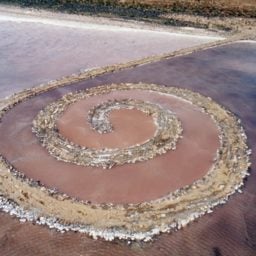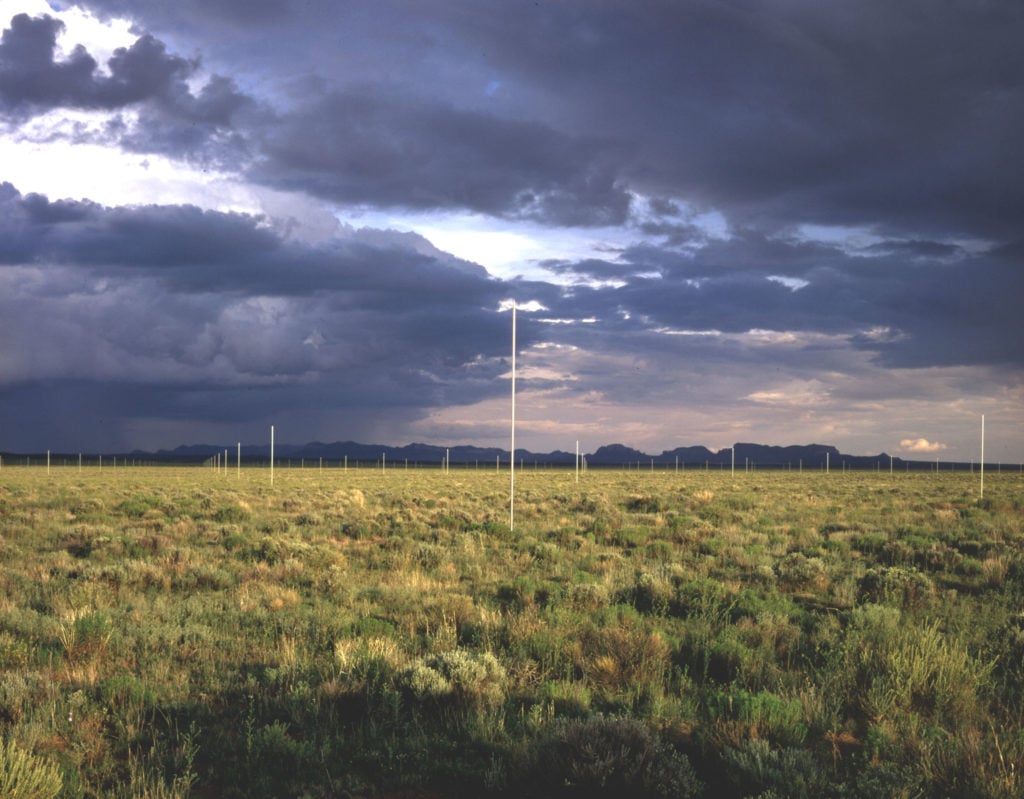

What: The Lightning Field by Walter de Maria
Where: Catron Country, Western New Mexico
Why: This work of Land Art is maintained by the Dia Foundation, and is marked by 400 stainless steel poles placed in the form of a grid. The poles are several times higher than an average person, and the tops end up on a plane level parallel to the ground regardless of the terrain the pole was erected in. Despite the fact that the title and composition of the work suggest that it is meant to be conducive to lightning, lightning actually strikes rather infrequently and is not the real point of the piece. Visitors are encouraged to spend as much time as possible in the field, especially during dusk and dawn.
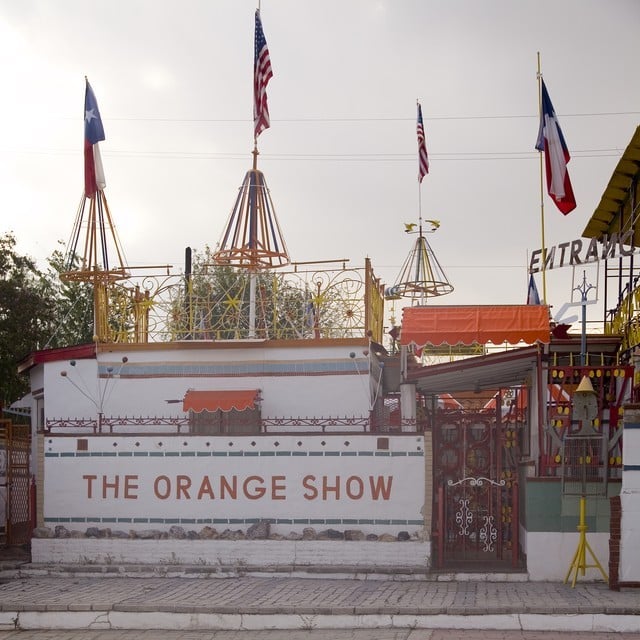
The Orange Show
Photo: 2011 uploaded by Jonathan Beitler. Licensed under Attribution.
What: The Orange Show Center for Visionary Art
Where: Houston, Texas
Why: The Orange Show Center comprises the Orange Show monument, the Beer Can House, Smither Park, and the annual Houston Art Car Parade, and is committed to “celebrating the artist in everyone.” Postman and visionary artist Jeff McKissack created The Orange Show in a vacant lot, working with found objects and everyday materials to transform his home into an architectural maze of walkways, balconies, arena,s and exhibits decorated with mosaics and brightly painted iron figures. Since his death, the foundation set up in his honor has expanded and now helps to support other folk art icons, taking under its wing the Beer Can House (which is exactly what it sounds like) and Smither Park, a folk art–inspired green space adjacent to the Orange Show grounds.
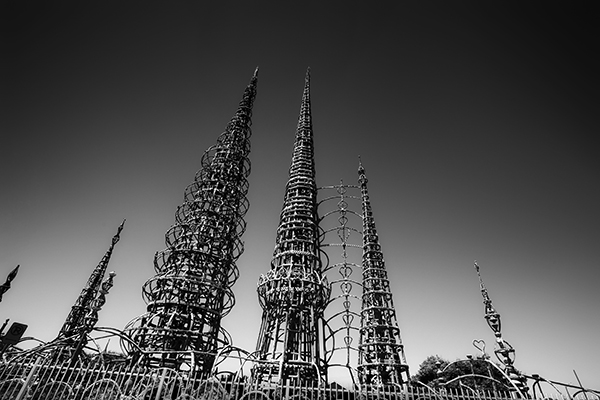
Simon Rodia, Watts Towers, Los Angeles. Photo by John Lewis, courtesy of the Cultural Landscape Foundation.
What: Watts Towers by Simon Rodia
Where: Watts District of Los Angeles, California
Why: The Watts Towers are a collection of 17 interconnected structures built by Italian immigrant construction worker Simon Rodia over the course of 33 years, during his spare time. The sculptures’ armatures are constructed from pipes and rods, wrapped with wire mesh and coated with mortar. The main supports are intricately embedded with pieces of porcelain, tile, glass and found objects, including sea shells, scrap metal, and bed frames. They were built free-form, without any pre-conceptualized design in mind.
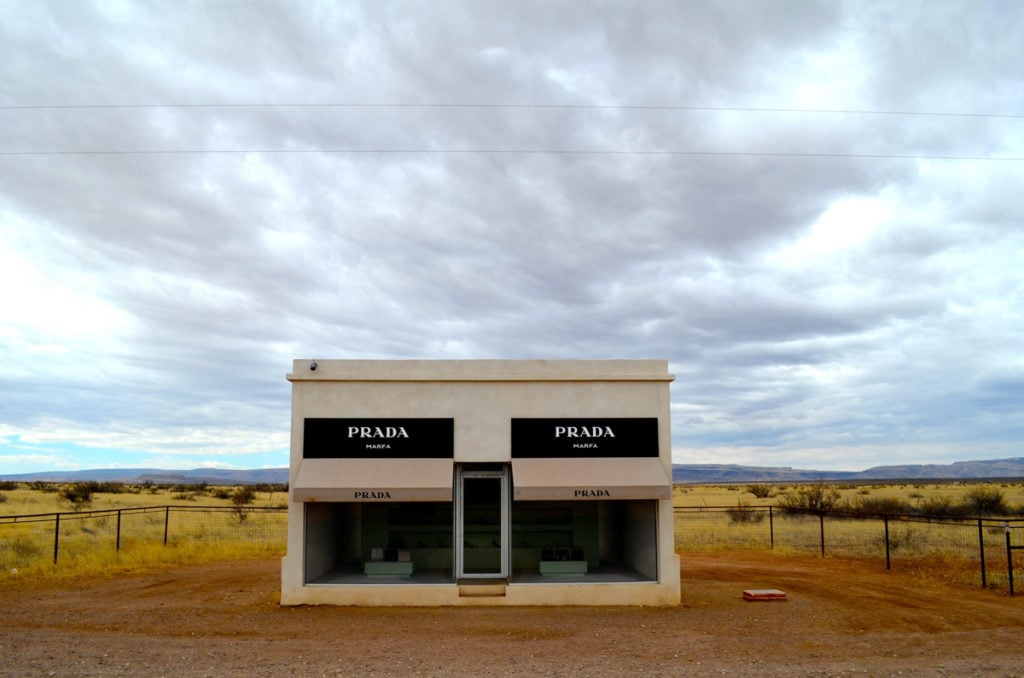
Elmgreen and Dragset, Prada Marfa (2005). Prada boutique in Texan desert. Photo by Veronique Dupont, AFP/Getty Images.
What: Prada Marfa by Elmgreen and Dragset
Where: Marfa, Texas
Why: Described by the artists as a “pop architectural land art project”, the sculpture depicts a fully-stocked Prada store. It cost approximately $80,000 to build, and was intended never to be repaired, with the thinking being that it would slowly degrade back into the natural landscape. However, after major vandalism occurred just three days after its erection, this plan was deviated from slightly. It has been criticized for reinforcing the gentrification and capitalism it attempts to critique, giving it a questionable and multi-layered meaning. Along a ledge that runs around the base of the building, hundreds of people have left business cards, weighed down by small rocks.
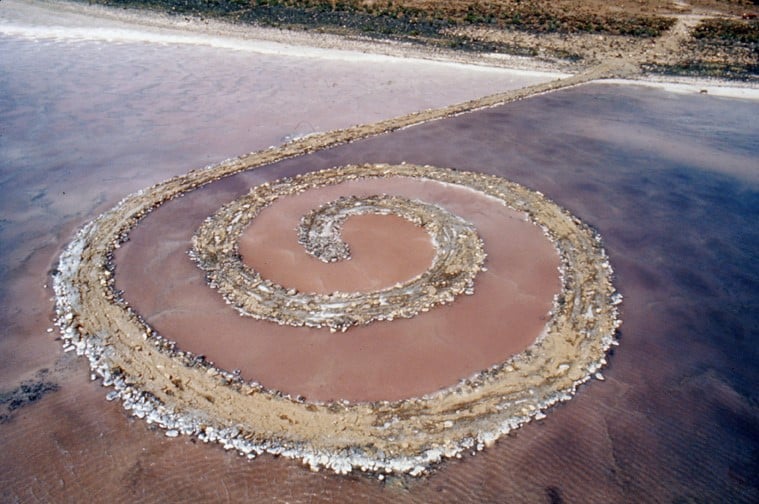
Robert Smithson, Spiral Jetty (1970). Photo courtesy of James Cohan Gallery.
What: Spiral Jetty by Robert Smithson
Where: Rozel Point, Great Salt Lake, Utah
Why: A significant earthworks sculpture, Spiral Jetty is a natural intervention constructed of mud, salt crystals, rocks, and water. It is sometimes visible and sometimes submerged, depending upon the water level of the lake. At the time of construction, the lake was abnormally low due to drought. It was then concealed for three decades, and was again revealed in 2002, when it remained visible for a full year. Obviously, conditions fluctuate, but as of January 2014, the jetty is above water and visible. It is maintained by Dia Art Foundation. The construction of the jetty was documented in a film of the same name.
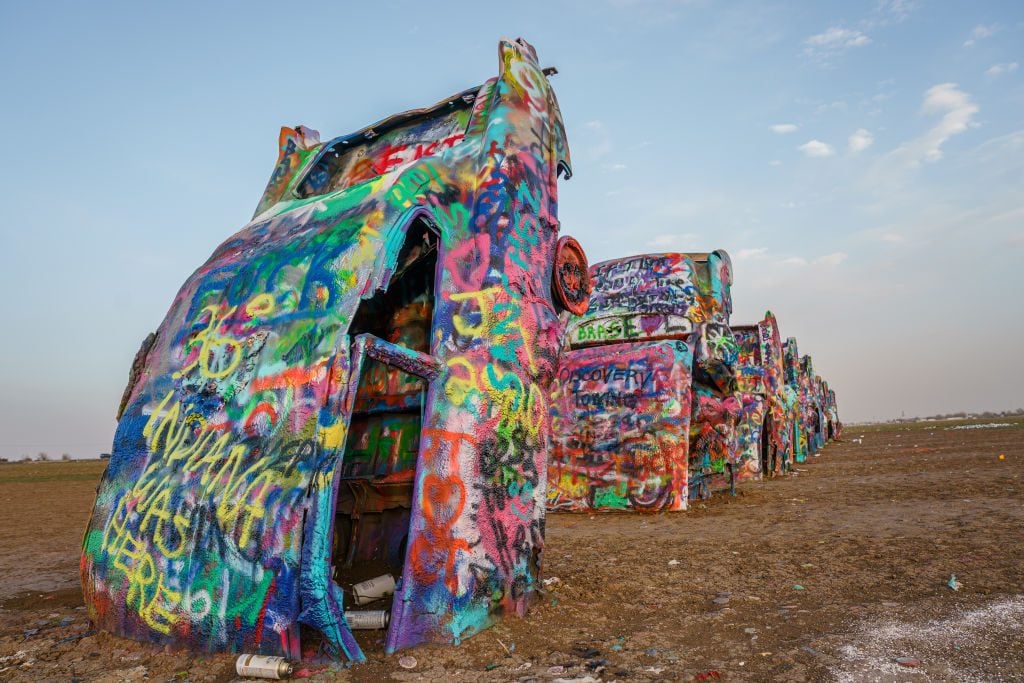
Cadillac Ranch, a public art installation and sculpture created in 1974 by Chip Lord, Hudson Marquez and Doug Michels on December 22, 2020 in Amarillo, Texas. Photo by Josh Brasted/Getty Images.
What: Cadillac Ranch by Chip Lord, Hudson Marquez, and Doug Michels of the art collective Ant Farm.
Where: Amarillo, Texas
Why: The public art installation, which consists of brightly painted Cadillacs half submerged in the ground, is visible from the highway. Although the project is technically on private land, visiting it up close is tacitly encouraged, as is adding new graffiti to the vehicles. According to Wikipedia, the cars are periodically repainted various colors—once white for the filming of a television commercial, once flat black to mark the passing of artist Doug Michels. The cars were briefly “restored” to their original colors by the motel chain Hampton Inn; however this lasted less than 24 hours before they were freshly graffitied again.
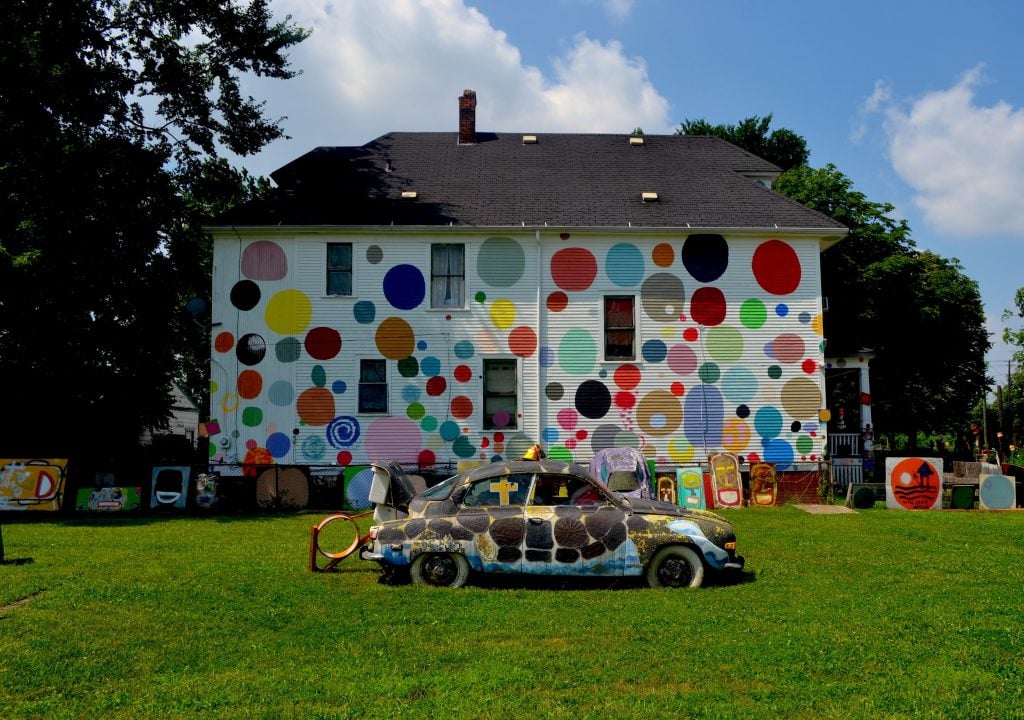
The Dotty Wotty House at the Heidelberg Project. Photo courtesy of the Heidelberg Project Archives.
What: Heidelberg Project
Where: Detroit, Michigan
Why: The vibrant, open-air art environment dedicated to “art, energy and community” is located on, you guessed it, Heidelberg Street. Created in 1986 by artist Tyree Guyton, the project focused at first on cleaning up the deteriorating area by decorating several houses with bright colors and found objects. It’s since evolved into a haven for emerging artists, an art education program for children, a solution to urban decay, and a nationally recognized organization. Unfortunately, a string of arsons led to several of the houses being destroyed in 2013.

Eileen Gray’s Villa E-1027, a newly restored on the Cote d’Azur. Photo by Manuel Bougot.
What: E-1027
Where: Roquebrune-Cap-Martin, South of France
Why: Designed in 1924 by Eileen Gray and her lover Jean Badovici as a vacation home, the L-shaped house is perched above the Côte d’Azur, and features a flat-roof and floor-to-ceiling windows. Le Corbusier was a close friend of the couple, and added his own touch by painting a series of murals on its walls between 1937 and 1939, which at the time infuriated Gray, as she saw it as an intrusion on her architectural vision. Recently, debates have raged over whether or not and how to restore the house, which is in need of repair.
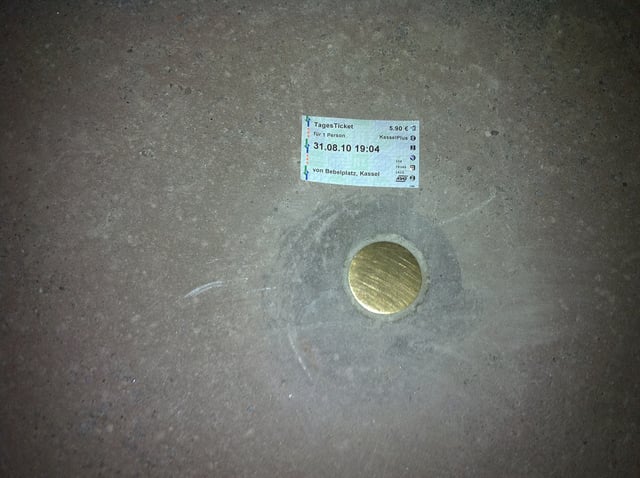
Vertical Earth Kilometer
Photo: Flickr
What: The Vertical Earth Kilometer by Walter de Maria
Where: Kassel, Germany
Why: Located in Friedrichsplatz Park, the work consists of a kilometer-long brass rod completely sunk into the earth so that only the very top of the pole—level with the ground—is visible. The enormity of the work is thus left to the viewer’s imagination, and they must trust that it actually exists. As a companion to the piece, de Maria created The Broken Kilometer, housed in New York City, which is composed of 500 2-meter-long solid brass rods, each with the same diameter as the rod used for Vertical Earth.

A plane at The Boneyard Project.
Photo courtesy of the Boneyard Project
What: The Boneyard Project
Where: Arizona desert
Why: Supported by the Eric Firestone Gallery, the Boneyard Project is an installation of scrapped military planes that have been repurposed as canvases for artists. Swoon, Kenny Scharf, Retna, and Raymond Pettibon are among those who have painted here. Conceived by Firestone and organized by curator Carlo McCormick, the project came to fruition in 2010.


